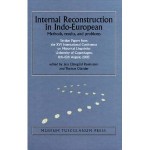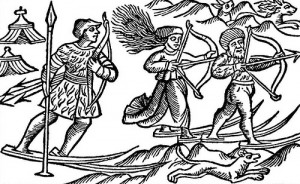S.A. Burlak, M.A. Zhivlov and I.B. Itkin have reviewed Jens Elmegård Rasmussen & Thomas Olander (eds.): Internal Reconstruction in Indo-European (2008) in the latest issue of Voprosy jazykoznanija (5, 2010:130-135). I find it positive that the reviewers take the time to thoroughly discuss most of the individual articles, and even more so that they devote almost one and a half columns to my contribution, “Internal Reconstruction vs. External Comparison: The Case of the Indo-Uralic Laryngeals”. 
However, that gladness quickly turns to indignation as it becomes clear that the reader is presented with a distorted impression of the content. My etymologies are rejected without motivation, and the reader is not provided with any information about why they were proposed in the first place. The four or five main points of the article, although deducible from the abstract and conclusions, are practically left out of consideration.
The reviewers start out by characterizing me as an “adherent of the Nostratic hypothesis”, although this cannot be explicitly inferred from the article. I have an open mind on these matters, but as it happens, one of my main points is that Nostratic etymology, because it is too focused on a search for cognates between Indo-European (IE) and Afro-Asiatic, can lead to wrong conclusions about Indo-Uralic (IU), and that it can prove fruitful to carry out bilateral or trilateral comparison before turning to the multilateral one. I am focusing on relations between IE, Uralic, and Yukaghir, but this does not necessarily imply that I have a firm opinion on more distant relationships (primarily because I do not yet have sufficient knowledge of the other languages involved). IU does not equal Nostratic. We must distinguish between these different levels of macro-comparison (or, perhaps rather, different degrees of khalepo-comparison), even though long-rangers on one side as well as their critics on the other hardly ever do so.

The reviewers claim that my comparison of the IE word for ‘hand’ and Uralic ‘limb’ fails since the PIE reconstruction is in fact *ĝʰes-r/*ĝʰos-to- rather than *ĝʰes-nt-, thus not corresponding to PU *jäsVnV. It is true that the IE daughter languages point to *ĝʰes-r, *ĝʰos-to- (or ĝʰes-to-), while my protoform is the result of internal reconstruction. The stem surely does not exhibit a typical heteroclitic pattern, and it is conceivable that ‘hand’ (Hitt. kessar, Skt. hásta-) was earlier inflected like Hitt. gipessar, gipesn- ‘cubit, ell’, cf. Skt. gabhasti-. Most heteroclitics have stems alternating between nominative -r and oblique -n(t)-, and these are probably ultimately identical to each other as shown by Birgit Anette Olsen in several papers. I admit that this should have been mentioned explicitly, and that the IE reconstruction should have been more precise. However, this does not at all affect the validity of my comparison; no matter how you reconstruct the stem-element under discussion, it does not form part of the root in either group. I show this by a hyphen which the reviewers have unfortunately omitted in their rendering (*jäsVnV instead of *jäsV-nV). They do not seem to take the root comparison proper into account, nor do they evaluate this or any other sound correspondences presented.

They subsequently claim that I should reconstruct *kaswa, not *kawk-sa- for ‘high’, but this is not my idea either. I refer loud and clear to Jorma Koivulehto 1991 (Uralische Evidenz für die Laryngaltheorie); again, my references have been ignored by the reviewers.
Finally, I am criticized for equating the IE item *ĝʰalgʰ- ‘pole, stake’ with as many as three Uralic ones. Now, first of all, I write “and/or” between the Uralic items, obviously indicating that they are normally considered distinct, and that, although they can formally correspond to the IE item, they need not all be related to it nor to each other. Secondly, it is quite normal in Uralic linguistics to separate roots if no known derivational relationship can be applied to them, even in cases where the semantics, the physical similarities and the distribution among the daughter-branches tell us that they are probably ultimately related, albeit in ways that we have not yet uncovered. It is important to note in this respect that the three reconstructed forms are from different chronological stages; *jälŋV ‘tree trunk’ is Proto-Uralic, *jalka ‘leg, foot’ is Fenno-Ugric, while *jalaka ‘elm’ is Balto-Fennic.
Of course none of the etymologies would be convincing if I presented them in the way that the reviewers claim that I do. I conclude that none of their objections appears to be valid.
I find it a bit odd that as many as three reviewers can agree on such ill-founded criticism, especially when their main point is that in Copenhagen, like everywhere else, we use the wrong methodology. It is very easy to refute critique of that kind, but it is still a pity that you have to meet it even from reviewers otherwise known as serious and excellent linguists.

I’ve just realized that this is the paper I’ve read in an earlier(?) form when you sent me your thesis. Admittedly, I’m still very sceptical regarding Indo-Uralic, but I really do not see how it is possible to review a paper rich in so many observations just so shortly as the Russian colleagues did. It definitely requires a mpre thorough analysis.
Anyway, congratulations to this blog, just discovered and added to my bookmarks.